
Arocs 2658 with turbo retarder clutch at Scholpp Kran & Transport
Economics & Logistics
Precision work with the heaviest of loads – that's the daily business of Scholpp Kran & Transport GmbH based in Stuttgart. In order to be able to keep this promise, the company has two Arocs 2658 for loads of up to 180 tonnes with turbo retarder clutch in their fleet.
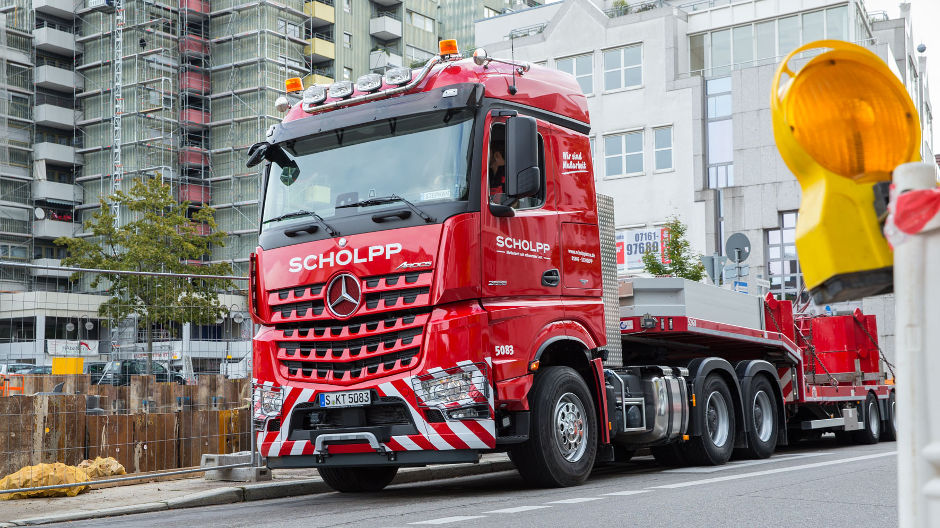
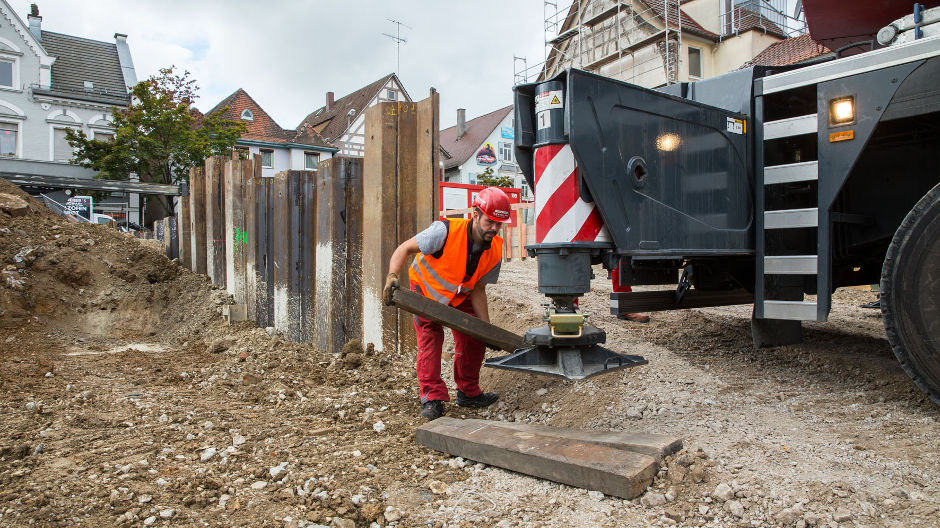
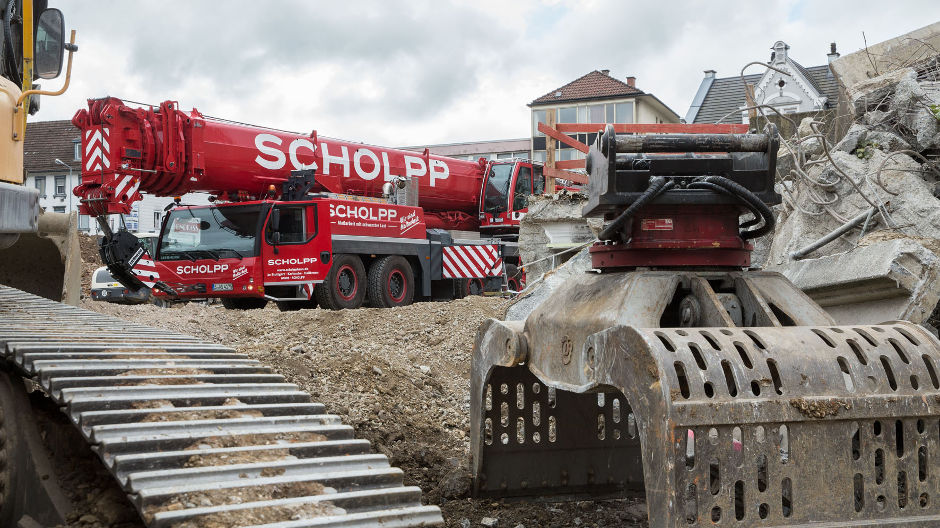
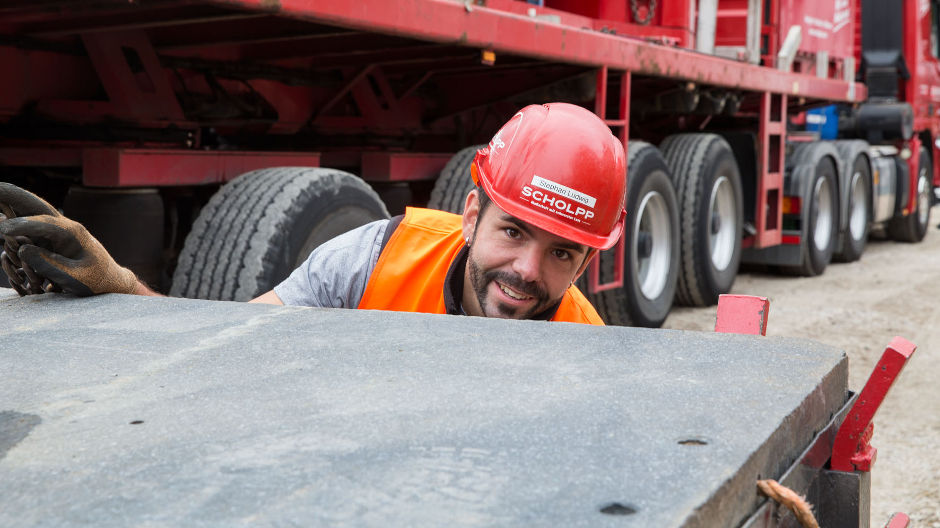
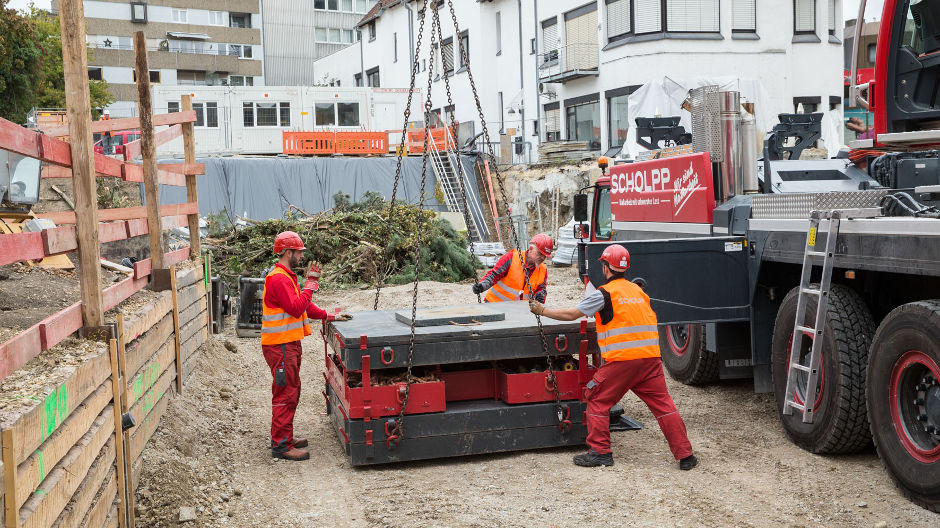
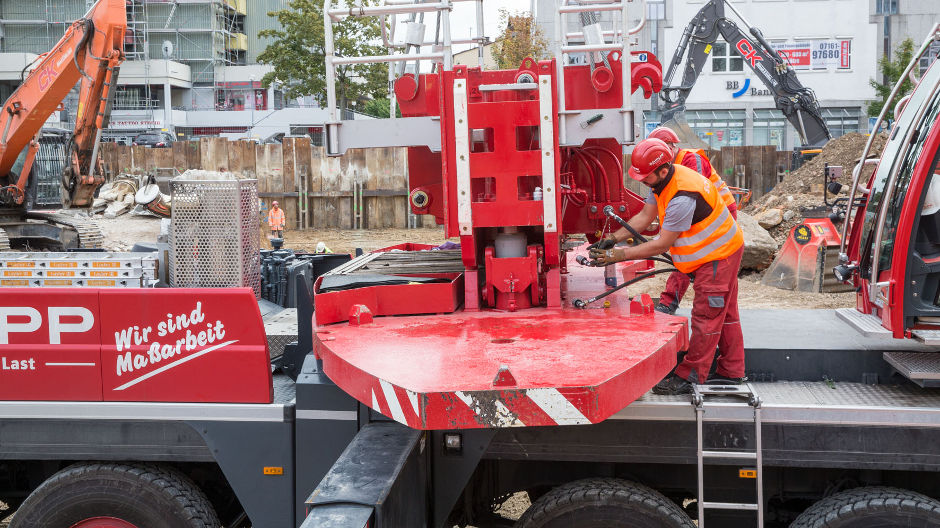
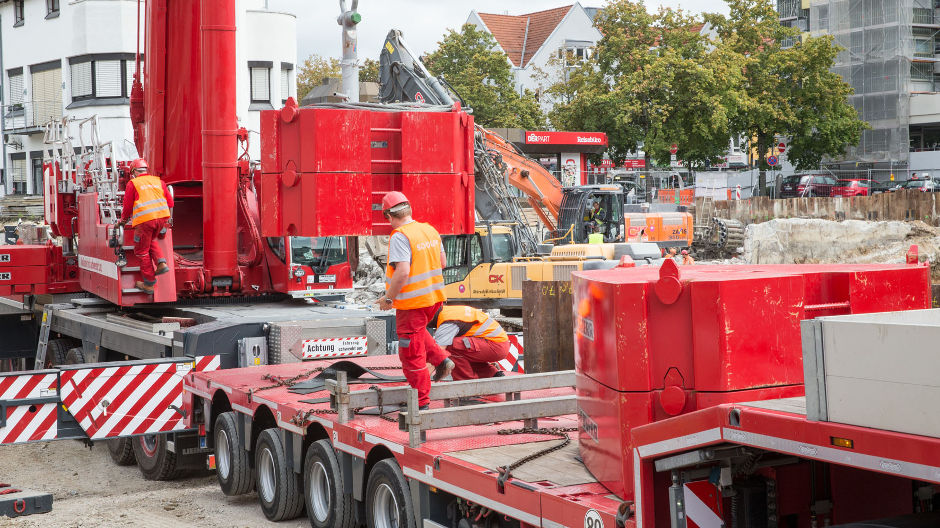
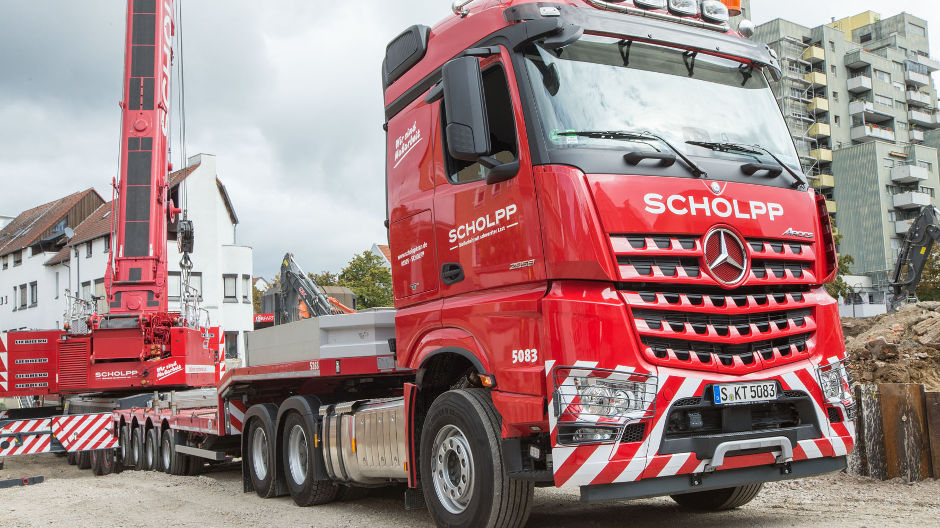
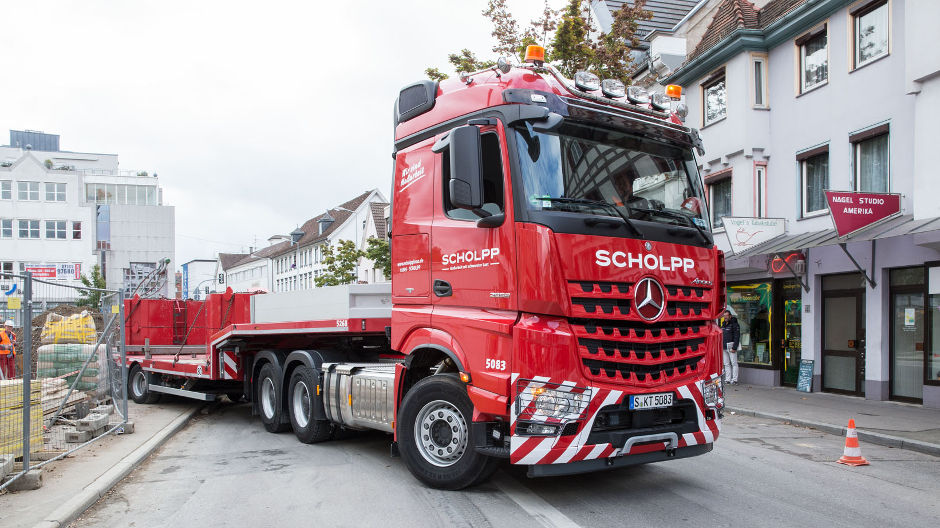
A bit of a squeeze. The corrugated sheet steel wall juts out of the gaping hole in the ground and restricts the width of the excavation in Göppingen. To the front, huge blocks of concrete mark the edge of the plot. The job: the large Scholpp S-GK400 crane is to piece together a construction crane. Very carefully, the six-axle vehicle rolls down the ramp. Once it has reached the ground of the excavation, crane driver Jens Schmidt turns all the wheels to 45 degrees using the all-wheel steering and pulls away. Then stops – the S-GK400 is in position. The supports are extended quickly and lowered onto the shoring plates.
Now, counterweights with a total weight of 80 tonnes have to be safely attached to the rear of the crane. Truck driver Stephan Ludwig engages reverse gear in his Arocs 2658. This is normally extremely hard work for both man and machine. After all, Stephan is rolling down the ramp backwards with 43 tonnes of counterweights. But the 31-year-old remains calm, holding the vehicle combination and its gross weight of 66 tonnes in place using only the accelerator: "The Arocs is equipped with a turbo retarder clutch. As a result, the entire torque is available even at low engine speeds and I can manoeuvre easily."
And it's not just Stephan Ludwig who is pleased. "For us, the
turbo retarder clutch was the most important feature for the support
vehicles. Particularly for vehicle combinations with a gross weight of
up to 97.5 tonnes, we search long and hard for a wear-free and lighter
alternative to the heavy torque converter clutch," says Stephan
Burkhardt. He's the general manager and head of operations at Scholpp
Kran & Transport GmbH.
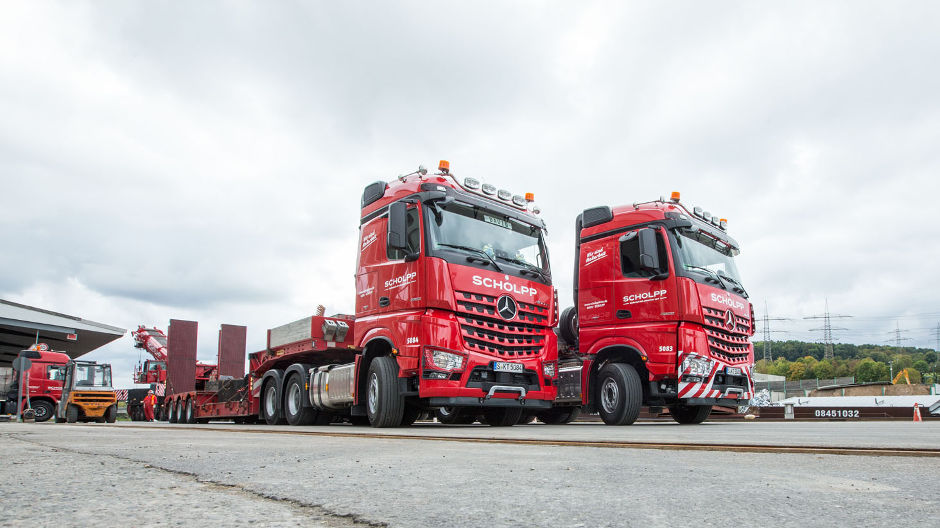
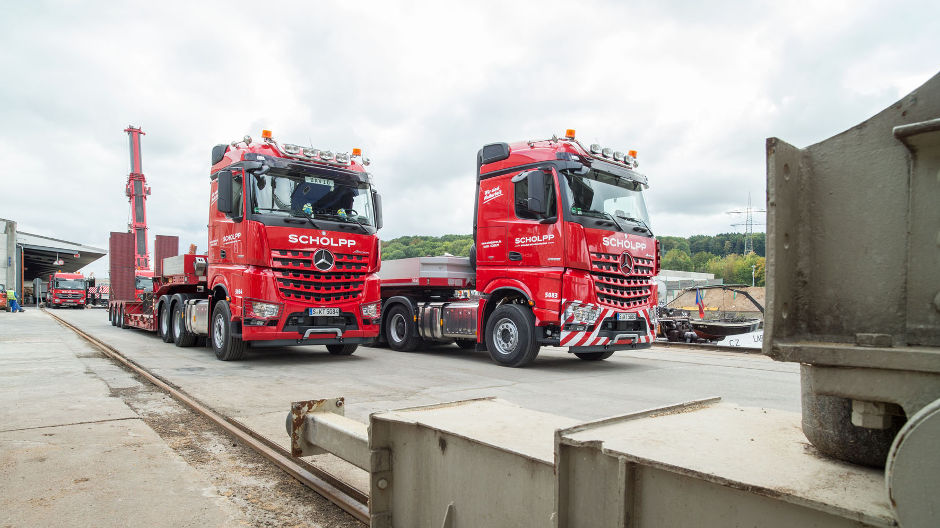
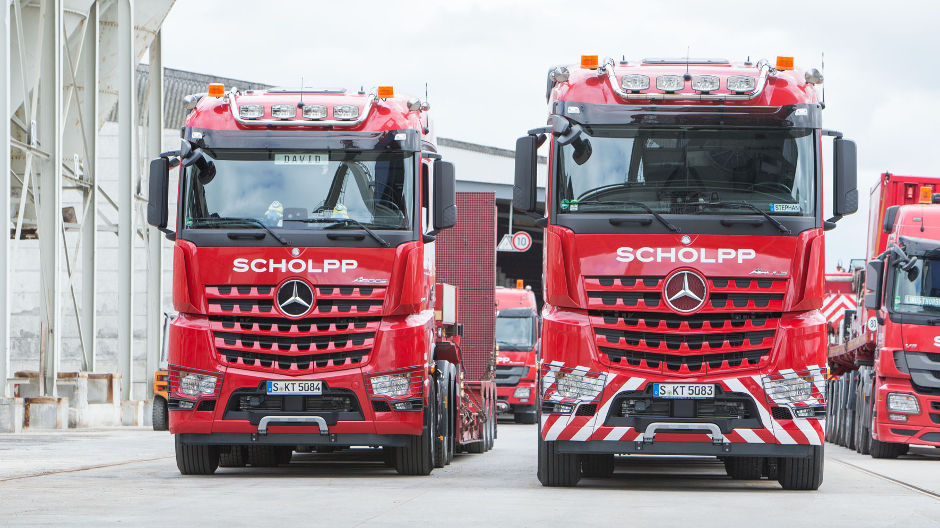
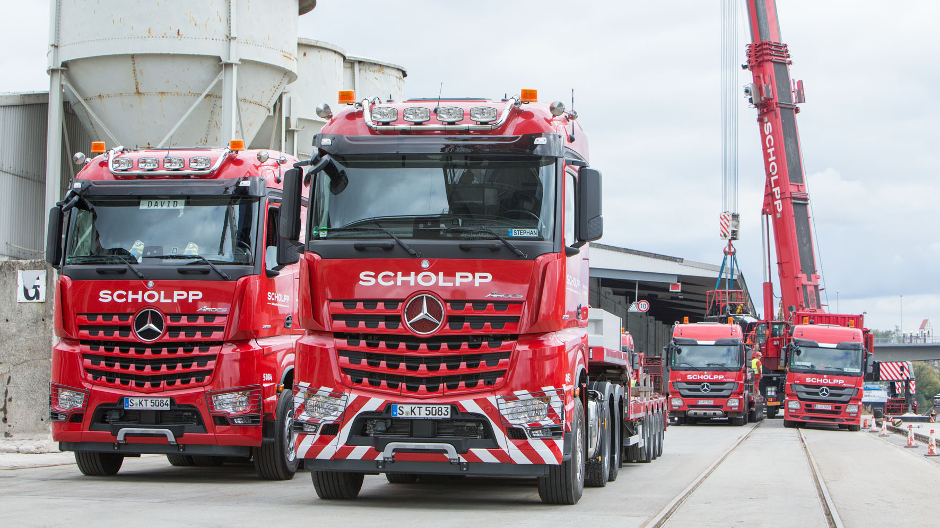
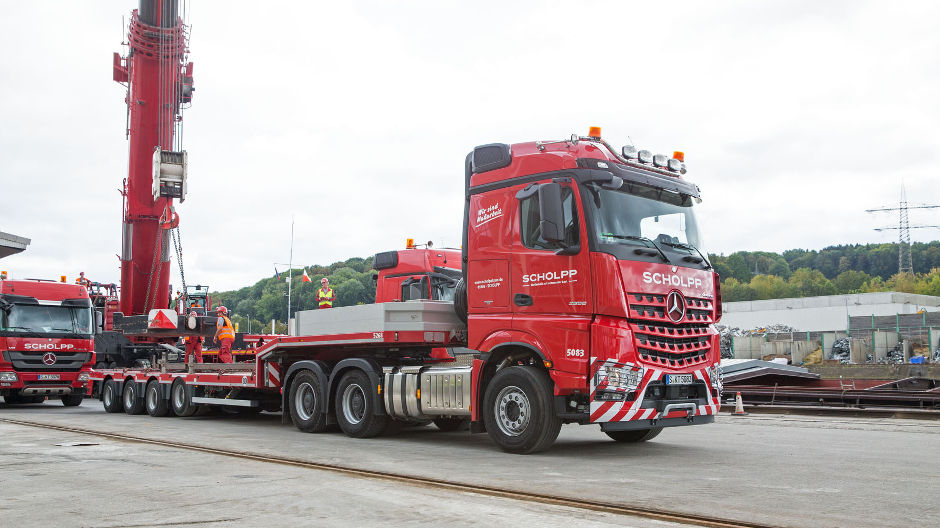
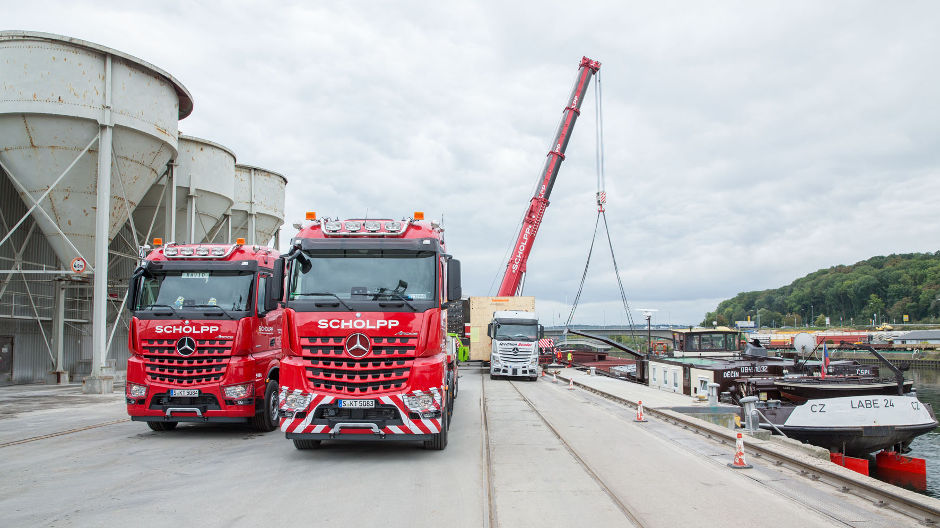
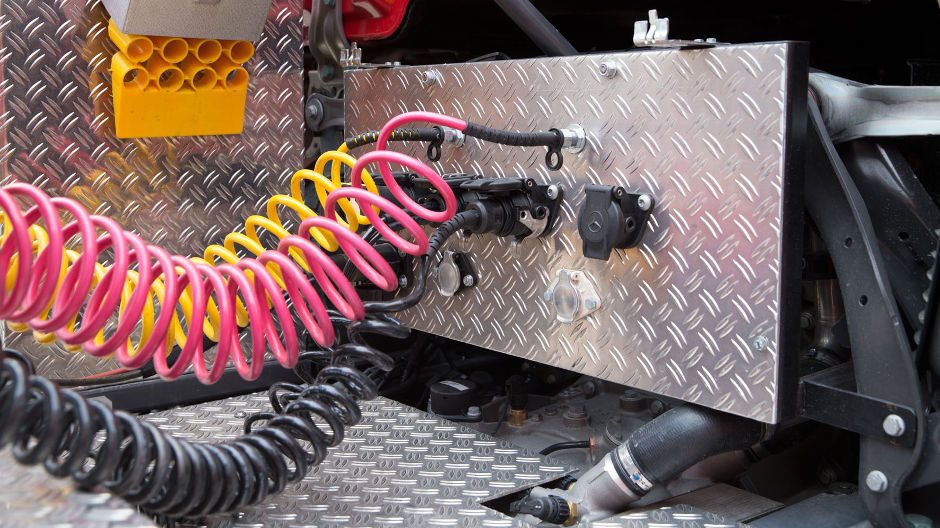
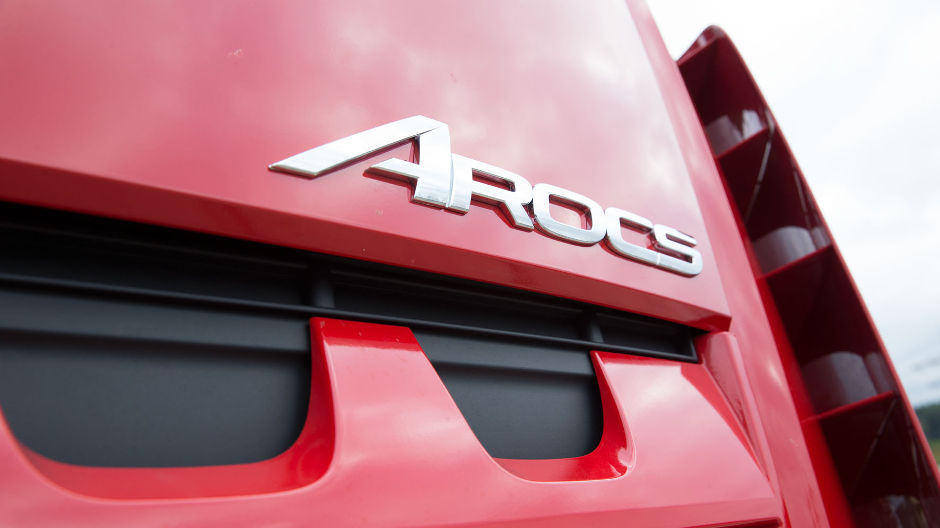
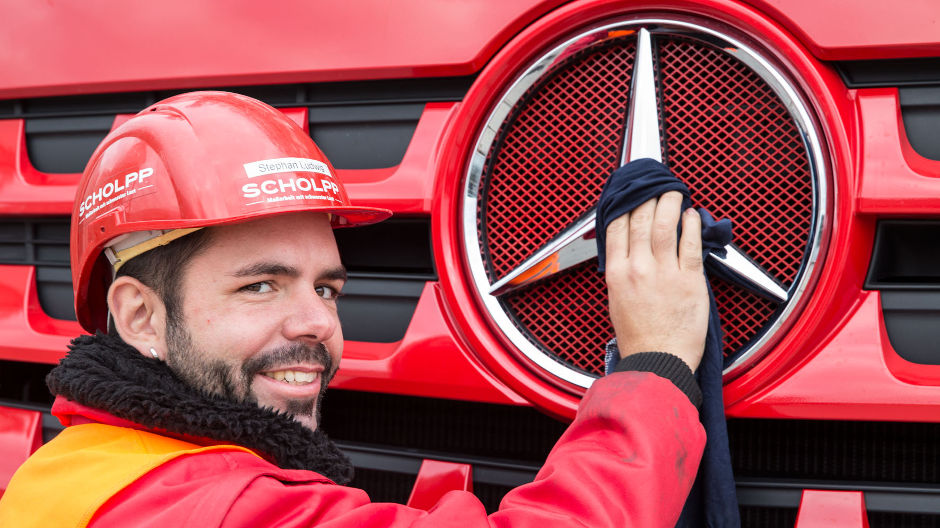
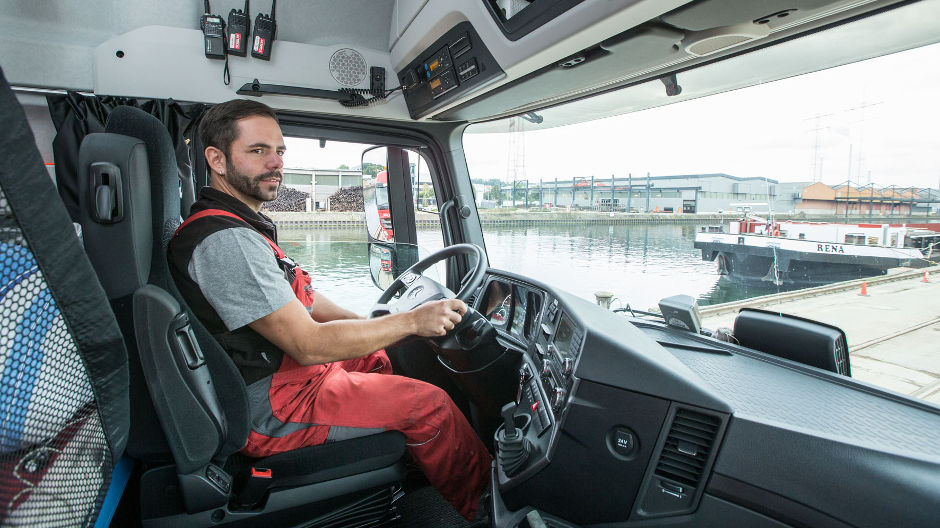
Reduced wear.
For branch leaders like Scholpp, the precise performance of vehicles at the limit is becoming increasingly important. The market is highly competitive: "Today's construction cranes on building sites are becoming increasingly more capable and take on many of the tasks for which we used to be contracted in. The current trend is towards a reduction in assignments, but those which we do receive are more complex and more load-intensive," explains Burkhardt. Scholpp thus puts its trust in increasingly more flexible and efficient crane solutions which help keep the competition at bay.
The focus on crane expertise runs like a thread through the Scholpp Kran & Transport GmbH company history: in 1956, with the post-war economic recovery gaining speed and cranes being rare, the company's founder Alfred Scholpp had his first truck-mounted KS 36 crane built. Over the decades, Scholpp developed to become one of Europe's leading companies for worldwide industrial construction, employing more than 1400 employees.
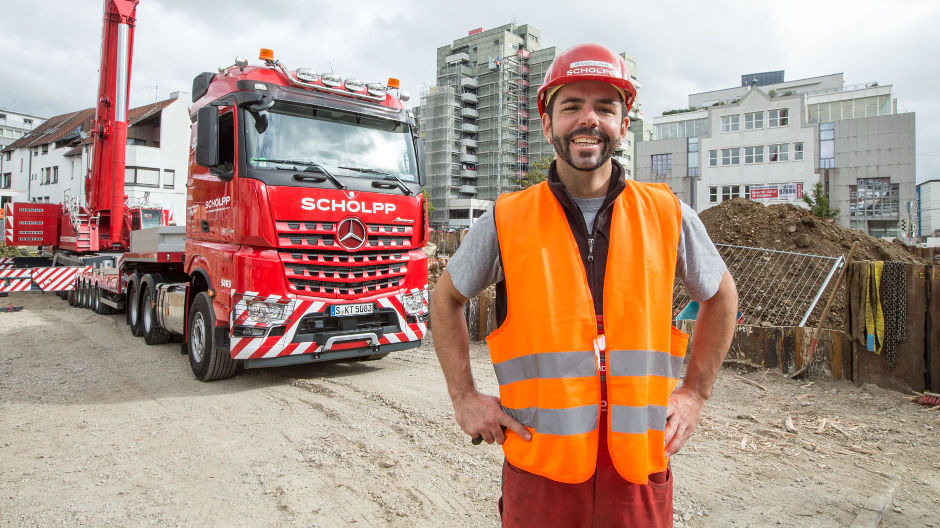
Manoeuvring zone. Thanks to the turbo retarder clutch, manoeuvring the powerful Arocs 2658 for loads up to 180 tonnes with its gross weight of 66 tonnes is no problem, even on construction site ramps like here in Göppingen's town centre.
For more than 30 years, Martin Scholpp, the son of the company's founder, has been shaping the company's history. Until he realised in 2013 that regional crane business required a different strategy than that used for worldwide industrial construction. Without much ado, he bought the crane and transport side of the business from the Scholpp Group and now manages this as an independent company in his role as an executive partner.
"Precision work with the heaviest of loads" – for Martin
Scholpp, this means acting in all business areas with a high degree of
meticulousness and the greatest possible level of productivity:
"The loads are getting increasingly larger and heavier, the
authorities are tightening regulations and large construction sites
are working to ever tighter schedules. To cope with all of that, we
need a highly efficient team," says Martin Scholpp.
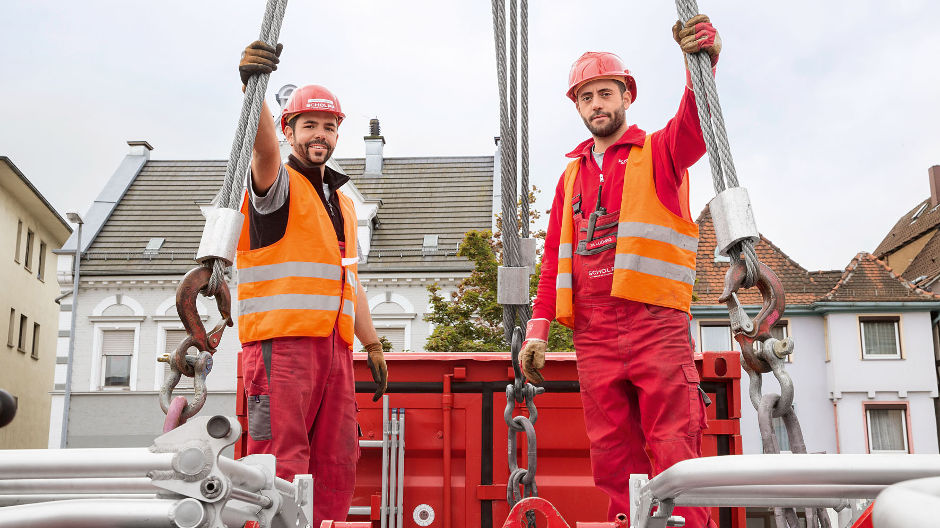
Crane brothers. As truck drivers, Stephan Ludwig (left) and his brother Thorsten, are also responsible for setting up the crane.
Greatly appreciated crane expertise.
His greatly developed knowledge of the crane business and around 10,000 operations a year, make Scholpp the first choice of construction companies and other heavy-weights like the energy provider EnBW, the Karlsruhe refinery or various mobile phone network providers in Stuttgart and the surrounding region. The fleet at Scholpp currently comprises 50 mobile cranes and has a suitable solution for every area of operation – from the heavy-duty transport of machine parts destined for subsequent transport on waterways right up to putting together construction cranes.
The fleet made up entirely of Mercedes-Benz trucks and support vehicles to which the Arocs 2658 vehicles also belong, is the strong backbone of all operations. "However it is our highly motivated employees that are most important to our success," says Martin Scholpp. Like the company's drivers, for example. They don't just take on regular heavy-duty tours, but are also responsible, among other things, for setting up the crane, preparing the counterweights and the rocker in readiness for crane operations.
For Scholpp, it's a matter of course that the Arocs trucks are equipped with the best possible safety package. Something which also makes Scholpp a more attractive employer. As well as Stephan Ludwig, his younger brother Thorsten, his father Thomas and even his grandparents Manfred and Hilde Wünsche work or have worked for the company. What Stephan Ludwig likes most about his job: "It's never boring," he says and jumps back up into the driver's seat. The large Scholpp S-GK500 crane awaits him in the town of Plochingen – as too is an 80-tonne container for inland shipping.
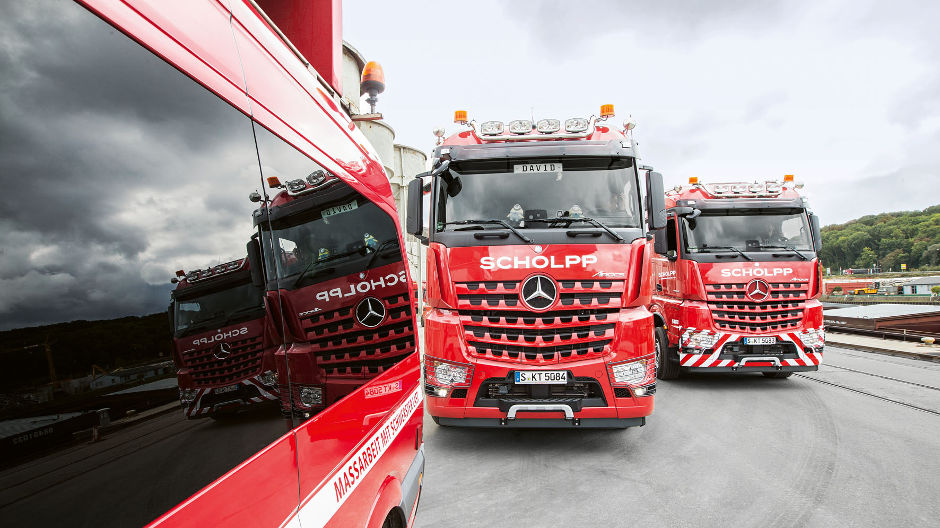
Highly specialised. The Arocs 2658 trucks play an important role at Scholpp, providing the cranes with optimum support during every operation.
Photos: Henrik Morlock




Comment
Please log in to post a comment.
5 comments
Es gibt die Turbo-Retarder-Kupplung mit all ihren Vorteilen auch in Kranfahrzeugen. Die Fa. Manitowoc rüstet die Kranmodelle GROVE GMK5250L, GMK5200-1 und GMK5180-1 standardmäßig mit dem System aus. Das Ganze in Verbindung mit einem MB-Antriebsstrang (OM471 / G280-16).
Es gibt die Turbo-Retarder-Kupplung mit all ihren Vorteilen auch in Kranfahrzeugen. Die Fa. Manitowoc rüstet die Kranmodelle GROVE GMK5250L, GMK5200-1 und GMK5180-1 standardmäßig mit dem System aus. Das Ganze in Verbindung mit einem MB-Antriebsstrang (OM471 / G280-16).